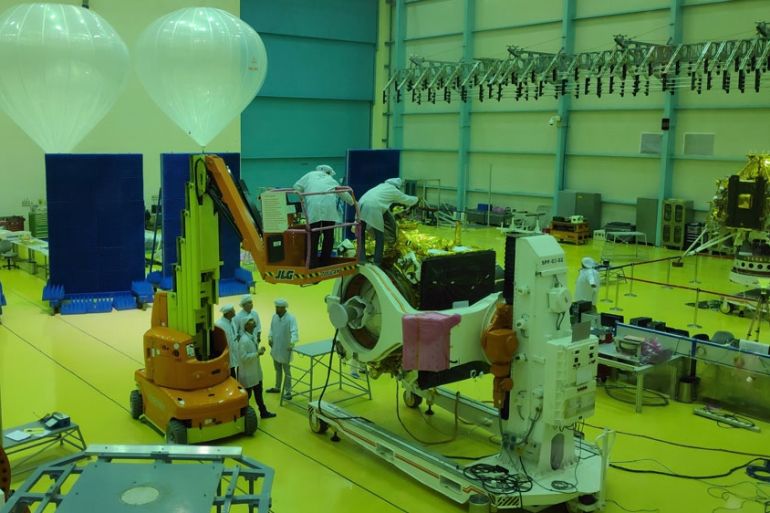India unveils Chandrayaan-2 spacecraft for moon-landing mission
ISRO plans controlled landing of rover on moon which, if successful, will make India fourth country to achieve the feat.

India has said it will launch its second lunar mission in mid-July, as it moves to consolidate its status as a leader in space technology by achieving a controlled landing on the moon.
The mission, if successful, would make India only the fourth country behind the United States, Russia and China to perform a “soft” landing on the moon and put a rover on it. China successfully landed a lunar rover in January.
Keep reading
list of 4 itemsRussia’s Angara A5 rocket blasts off into space after two aborted launches
Photos: Mexico, US, Canada mesmerised by rare total solar eclipse
Moment total solar eclipse occurs in North America
The unmanned mission, called Chandrayaan-2, which means “moon vehicle” in Sanskrit, will involve an orbiter, a lander and a rover, which have been built by the Indian Space Research Organization (ISRO).
The mission is scheduled to launch on July 15 on board ISRO’s Geosynchronous Satellite Launch Vehicle Mark III. It will cost about 10 billion rupees ($144m), ISRO said on Wednesday.
After a journey of more than 50 days, ISRO’s lander will attempt a “soft”, controlled landing near the lunar South Pole around September 6.
Once it touches down, the rover will carry out experiments while being controlled remotely by ISRO scientists.
“The last 15 minutes to the landing are going to be the most terrifying moments for us,” ISRO Chairman K. Sivan told media. The agency said variations in lunar gravity, terrain and dust could all cause problems.
‘Most complex mission’
The Indian mission would be the third attempted lunar landing this year after China’s successful Chang’e-4 lunar probe and the Israeli spacecraft Beresheet, which failed and crashed onto the moon in April.
“It is the most complex mission ISRO has ever undertaken,” Sivan said.
Chandrayaan-1, India’s first lunar mission in 2008, cost $79m and helped confirm the presence of water on the moon.
The Chandrayaan-2 was originally planned as a collaboration with Russia’s Roscosmos space agency, but in 2013 India scrapped the tie-up due to technical differences with the Russian programme.
In 2014, India launched an unmanned Mars mission at a cost of $74m, or less than the budget of the Hollywood space blockbuster, Gravity, and a fraction of the $671m the US space agency NASA spent on its MAVEN Mars mission.
In 2017, India launched a record 104 satellites in a single mission and has also built a reputation for low-cost space exploration and science missions.
In March, India said it shot down one of its own satellites, making it one of only four countries in the world to possess this technology.